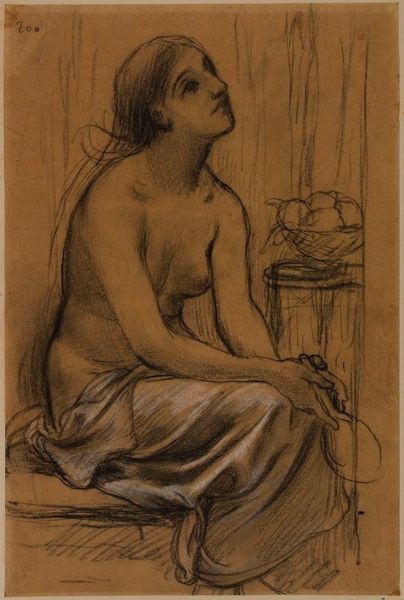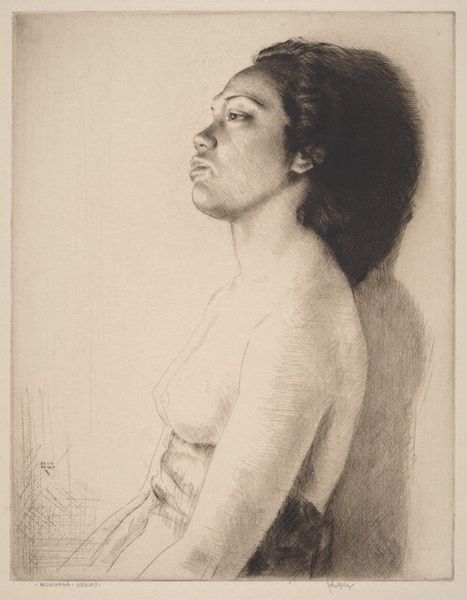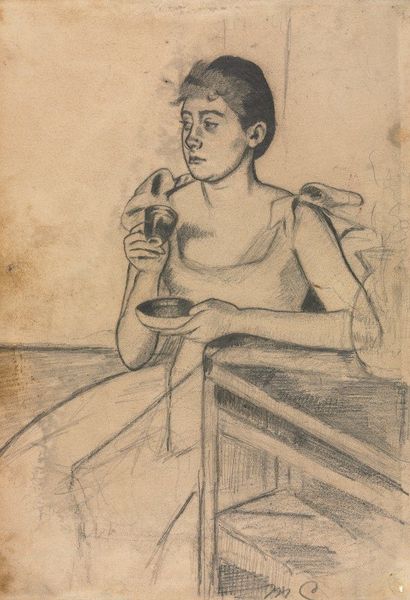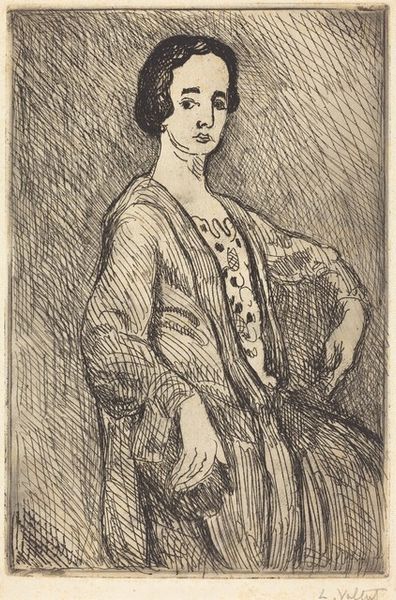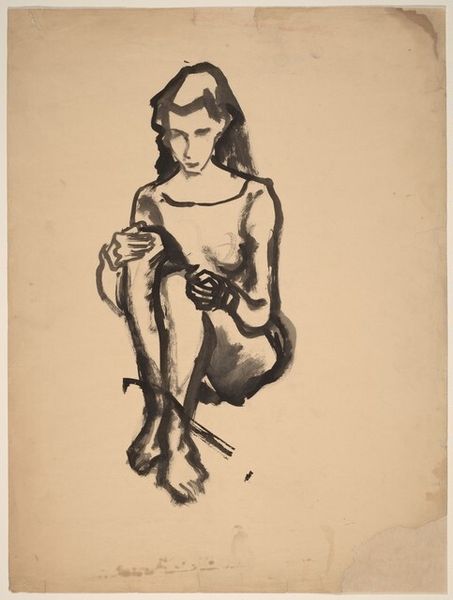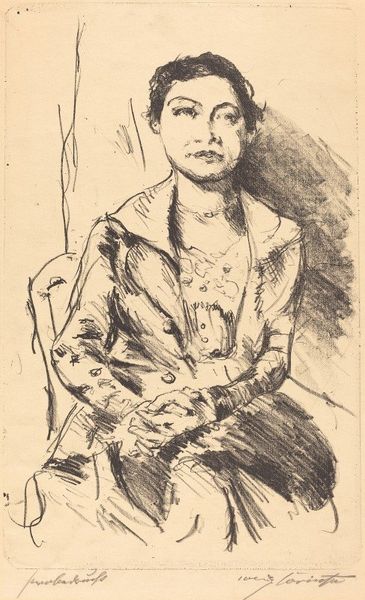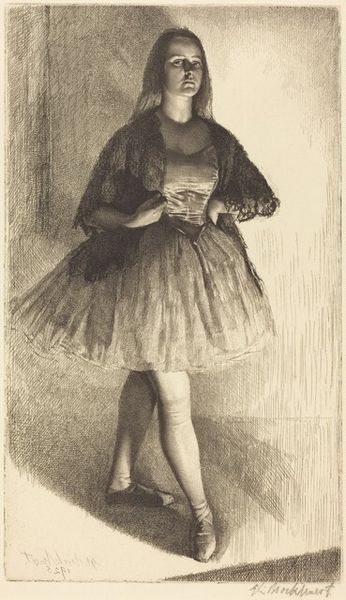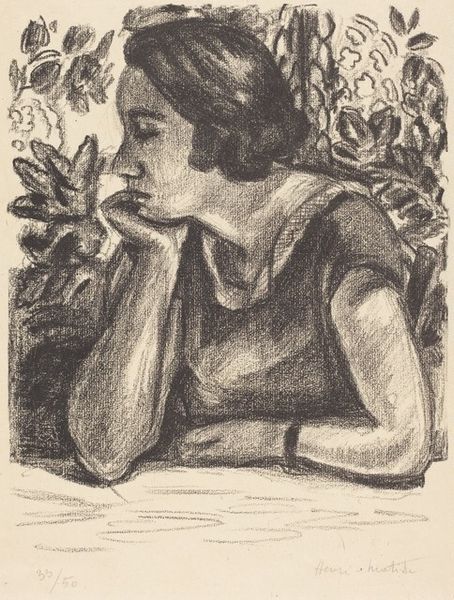
drawing, print, etching
#
portrait
#
drawing
# print
#
etching
#
charcoal drawing
#
figuration
#
portrait drawing
#
nude
Copyright: National Gallery of Art: CC0 1.0
Curator: Looking at "Nude Woman Seated," an etching by Theodore Roussel, what strikes you first? Editor: The contrast. It feels intimate and withdrawn at once, like catching someone unawares in a quiet moment. What about you? Curator: I think the artist skillfully utilizes line and shading. You can almost feel the texture of the paper beneath the etching; notice the cross-hatching creating those shadow areas. Considering the print medium, it must've taken meticulous labor to achieve this effect. Editor: Absolutely, etching's a patient craft! I wonder about the paper's sourcing. Was it hand-laid? What were the material conditions of Roussel’s studio like? And this choice of a nude figure: how does this play into broader representations of women at that time? The art historical context really brings another layer, right? Curator: The female form has always been a source of contemplation in art history. Yet, there’s something melancholic about her gaze; you wonder what's running through her mind. Maybe the "rawness" comes from knowing Roussel himself was an outsider, never fully embraced by the British art establishment. Maybe it seeped into the artistic vision here. Editor: Interesting angle! To me, her expression seems more related to the alienation of labour. Consider that this wasn't some commissioned masterpiece for an elite patron. Was the model a professional or someone he knew? Paying her, ensuring her safety— all these interactions inform the final product. It adds a human dimension to that wistful air. Curator: That reminds us every piece reflects the social realities and production of its time, the artist's heart laid bare, flaws and all! Thanks for helping me notice these subtleties. Editor: Always a pleasure to dive deep into the material, both physical and historical! It just shows that even a seemingly simple etching like this contains a multitude of stories!
Comments
No comments
Be the first to comment and join the conversation on the ultimate creative platform.


